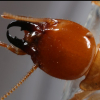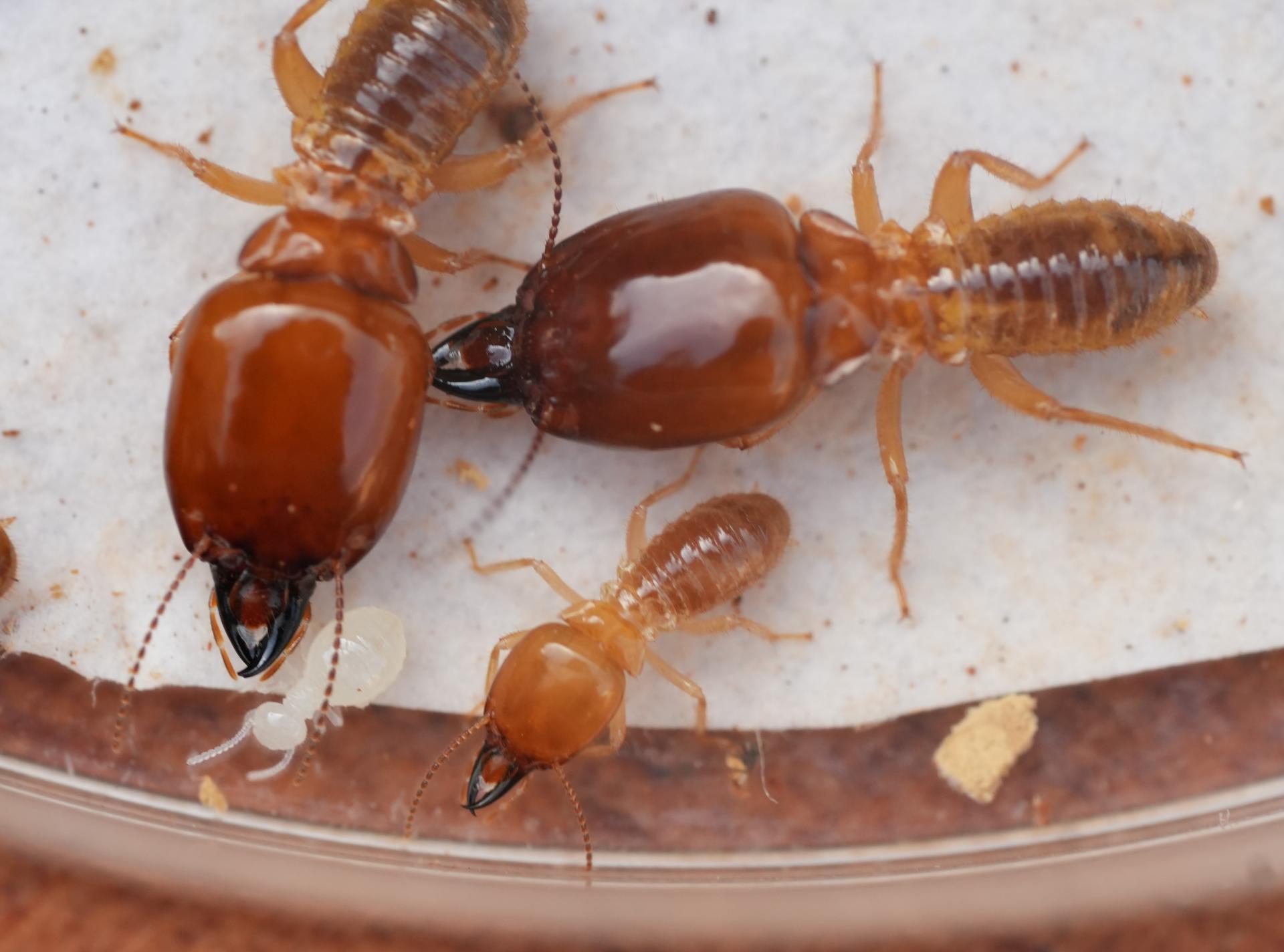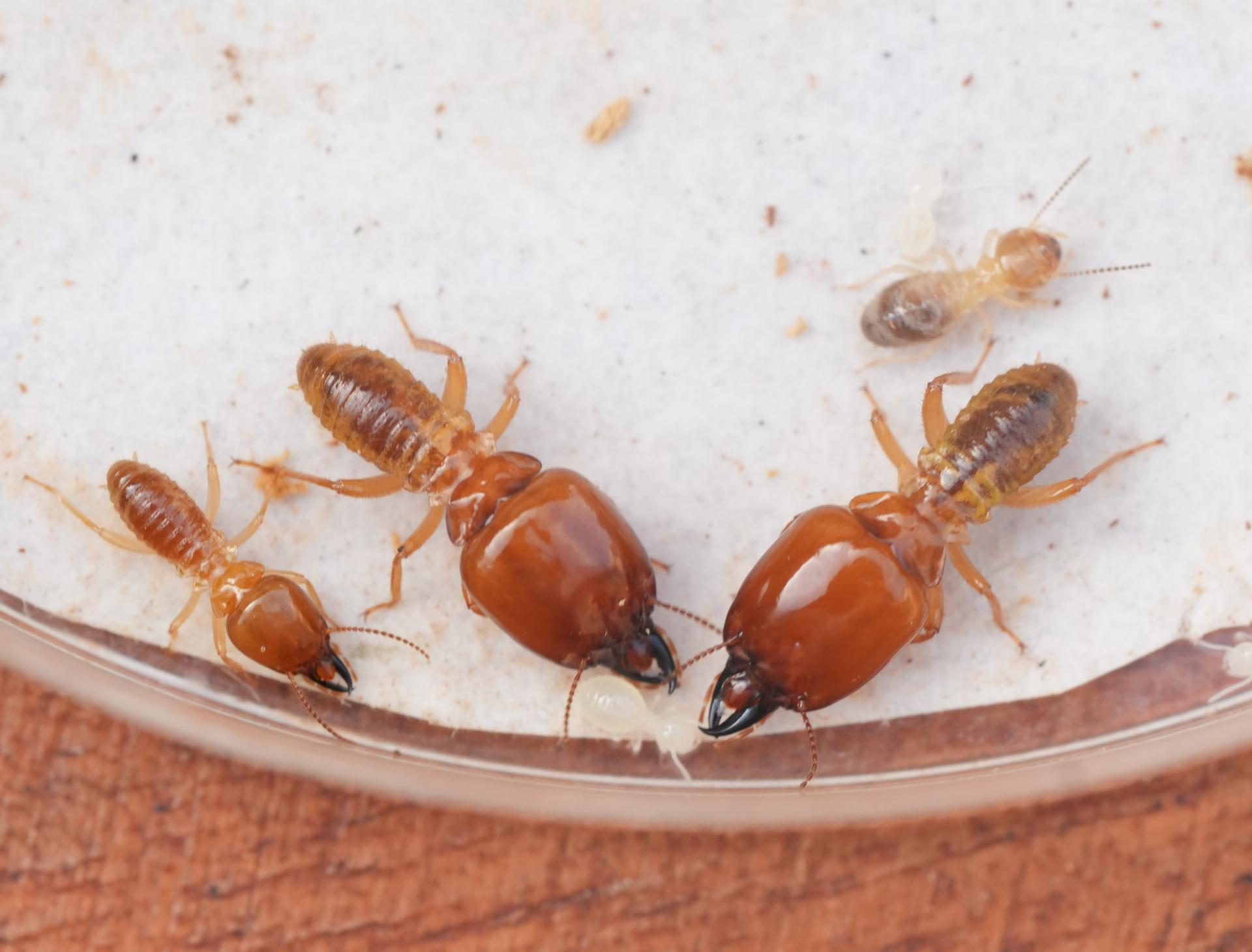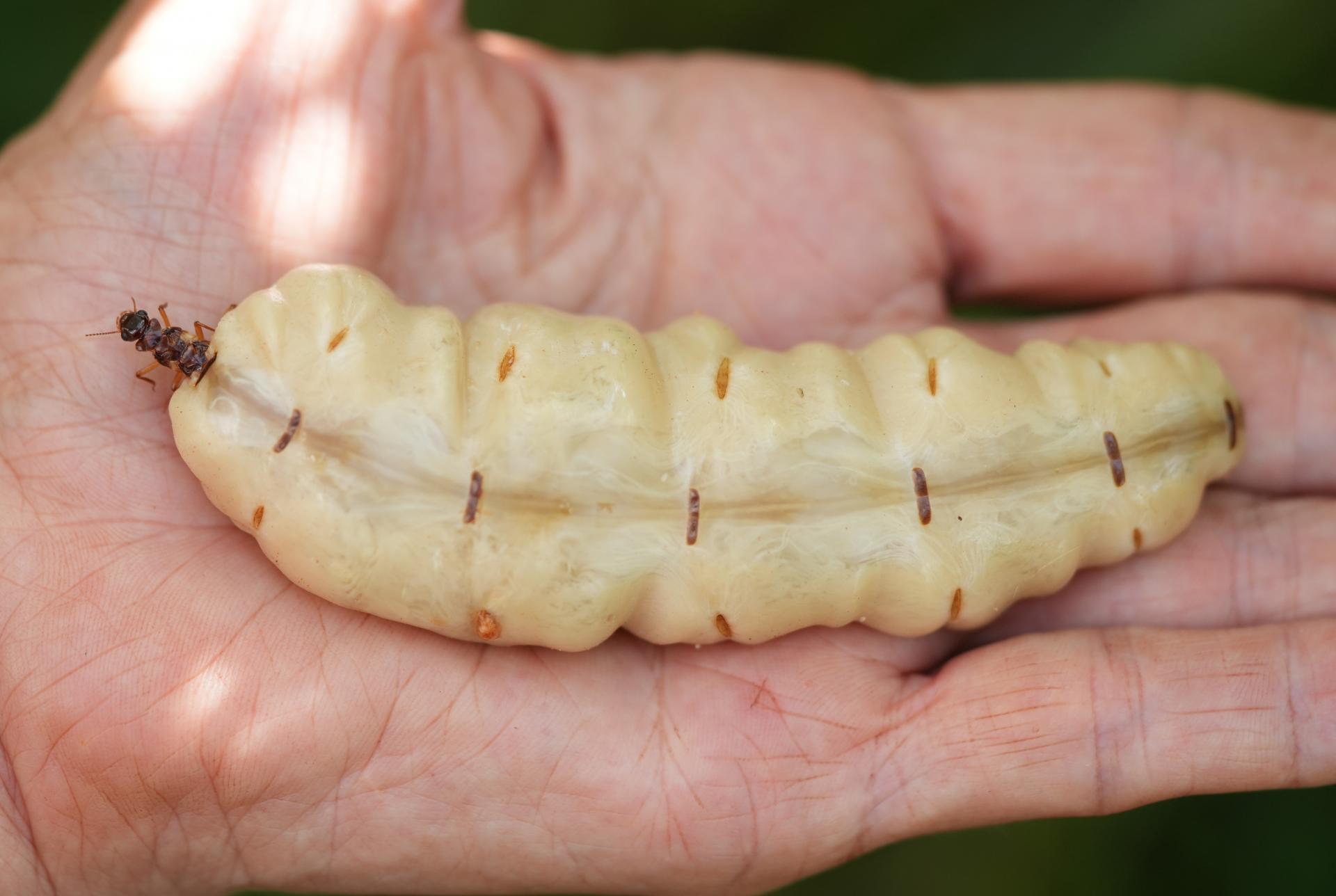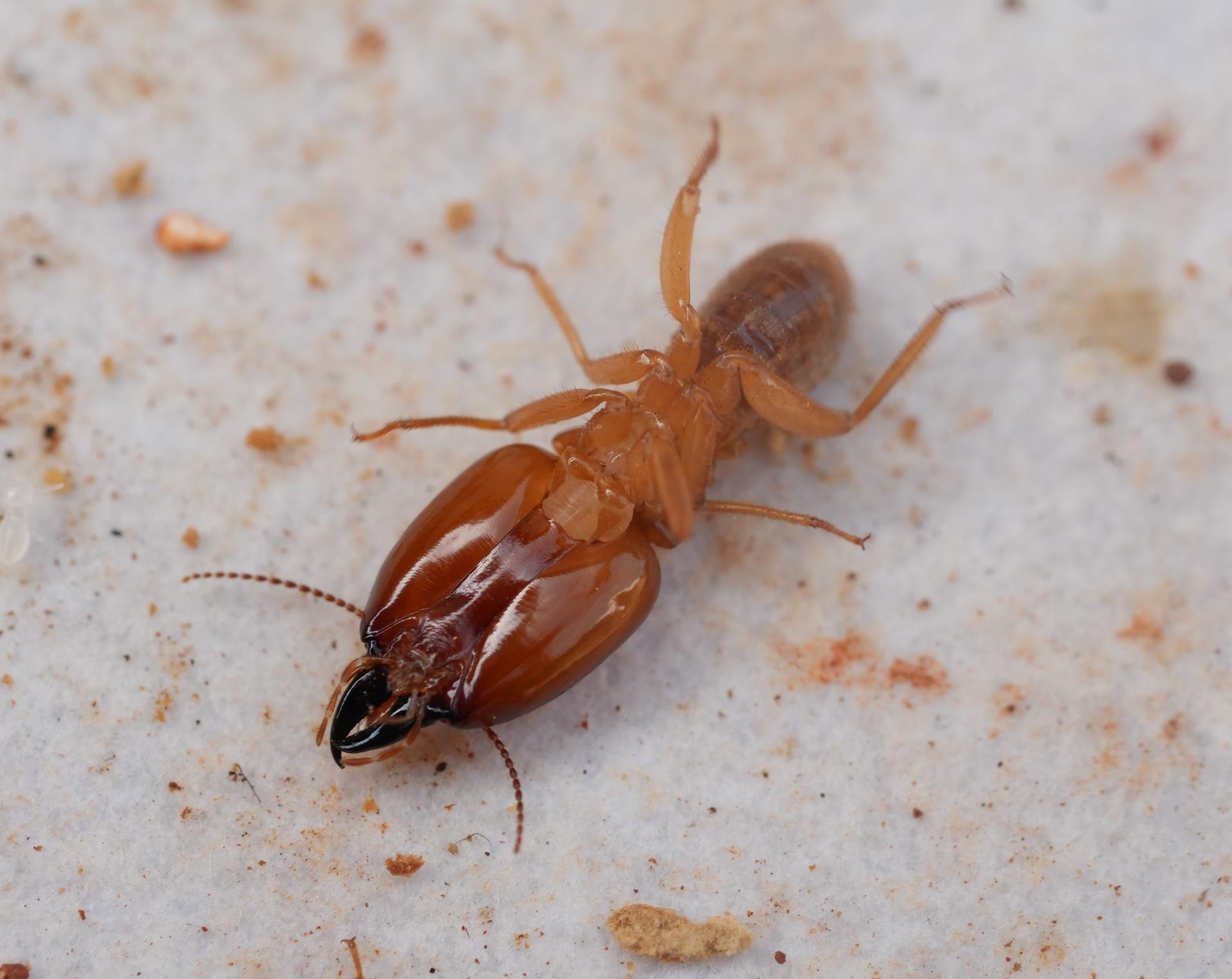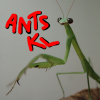Good day/evening forum! It's time for more termites i pictured in Camerun in my last trip, and this time we've got a banger: Macrotermes cfr bellicosus (with a likely ID at a species level courtesy of good old LC3)!
These are robust fungus-growing termites notorious for the huge epigeal mound they build and the large size of their mature (physogastric) queens. As in all Macrotermes, both the soldier and workers are bimorphic, meaning they come in two forms, and every form is sex-specific: all major and minor soldiers are female, all major workers are male and all minor workers are female. Major soldiers especially were particularly aggressive in their defence of the mound, rushing out to attack in case of a breach and delivering a very painful bite both for their ability to slice through human skin and for the wound-burning cocktail of benzoquinones they abundantly exuded upon biting!
Now let's see some pics:
Two major and a minor soldiers standing near each other, showing well their very marked bimorphism. The compact mandibles of these majors can cut trough human skin easily while the soldier pump an abundant quantity of benzoquinone-based defensive secretion into the wound. Under the major soldier on the left there is also a whitish larva.
A minor soldier, two major soldiers and a minor worker (plus a pair of pale larvae).
A physogastric queen. this monster measured a bir more than 12 cm, but they can get even larger. Note how the head and thorax are minuscule compared to the abdome, who is massively swollen to accomodate huge masses of ovaries for a phenomenal egg-laying capacity!
A major soldier turn upside-down to show the underside of the head capsule with the prominent postmentum. Also note the stout, sharp mandibles (here visible not covered by the labrum).


